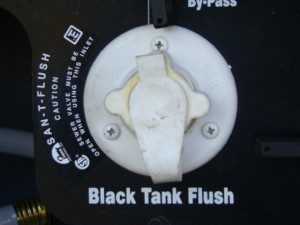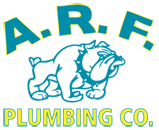Sometimes you need to deal with the unpleasant realities of life while utilizing your RV. We’re talking about holding and removing human waste from an RV, and while RV waste holding tanks aren’t the most glamorous topic that we get to cover when talking about our RV’s, it certainly is an important one.
There are two ways you can deal with your RV septic tank. One, you can ignore it, and never use it or two, you can learn how your toilet and RV black tank works.
Here are six things you need to know about RV septic and black water tanks, and how to care for and clean them:
- A little background about wast tanks – RV’s have two types of waste tanks on board: a gray water tank, and a black water tank. A gray water tank collects the water that goes down the drain of shower and sinks.
A black water tank collects waste from your RV toilet only. Or, you RV septic tank.
The black water tank (or RV waste tank) collects both liquids and solids, so caring for it is a bit different than your gray tank. In addition to human waste, the RV black tank also collects water used to flush the toilet, and of course, toilet paper.
- Start With a Water Base
If you want to keep your RV black water tank working properly, and (relatively-speaking) clean, it’s important to know that your RV septic tank should always start with some water in it as a base. Think of your toilet at home. Two reasons: First, it keeps odors from permeating your living space, and second, having water in the bowl first, helps make sure any solids that enter the bowl can move along without sticking.
- RV Black Tank Chemicals
Now that you have a base of water in your RV black water tank, it’s important to add a holding tank chemical to it, by dumping some down the toilet.
A holding tank chemical is an environmentally-safe liquid, that is added to the RV black water tank, to help break down waste and tissue, as well as to help control odors that build up in the tank. The chemical that you choose will have instructions on how much you should add, but if you are a weekend warrior in your RV, generally a couple of ounces is sufficient to get you through the weekend.
- Emptying Your RV Septic (black water) Tank
Now that you’ve made it through the weekend, you’ll want to find an approved place to dump your waste tanks. You will then hook the waste hose to your RV (according to your manufacturer’s specs), and secure the other end to the dump station.
You are going to be emptying both your gray and black water tanks, but it is important to remember to ALWAYS empty your black water tank first. Once it is done emptying, close the valve for the RV black water tank, then open the valve to empty the RV gray water tank.
The reason you empty the black water tank first, is so that the relatively “cleaner” water, coming from the gray water tank, can flush out any waste left in the hose (from emptying the black water tank).
- RV Septic and Black Tank Flushing
In addition to emptying your tank after use, from time to time you’ll want to do a more thorough cleaning of your RV black water tank. Waste and tissue can build up in the tank, causing potential clogs, and playing games with the sensors that indicate how full your tank is.
Many RVs come equipped with an RV black tank flush valve. In this case, you simply hook a hose to the rinse valve, and run water into the tank to flush it out. If you have this kind of flush valve on your RV, flushing your black water tank is fairly easy.
 If your RV does not come equipped with a manufacturer’s tank flush, you do have the option of adding an after-market flush valve to your RV black water tank. This type of after-market option comes in many shapes and sizes, and typically requires drilling a hole in your RV black water tank.
If your RV does not come equipped with a manufacturer’s tank flush, you do have the option of adding an after-market flush valve to your RV black water tank. This type of after-market option comes in many shapes and sizes, and typically requires drilling a hole in your RV black water tank.
One of the more popular options, for an RV black tank cleaner, is to utilize a garden hose extension called an RV holding tank rinser. This rinser is designed so send water in multiple directions, to clean debris and tissue from the sides of your RV black water tank.
To use the holding tank rinser, you will first want to make sure that your RV is not hooked up to a city water connection, and that your RV water pump is shut off.
Next, open up the flush valve to your RV toilet, and insert the holding tank rinser into the toilet, so that it goes down into the black water tank. When you turn the water on, the rinser will send water in multiple directions, but you’ll also want to turn and twist the rinser, to make sure you get as much of the sides cleaned, as possible.
Once this is done, you can empty your tank as normal, and any debris that was removed from the sides of the tank will be emptied into the dump station.
- Portable RV Waste Tanks
If you camp in the same spot for long periods of time without sewer hook ups, you may find it necessary to take advantage of a portable RV waste tank.
These waste tanks allow you to empty the contents of your black and grey water tanks into an external tank, which you can then transport to a dump station. RV portable waste tanks usually have wheels and a handle, so they can easily be pulled across the campground for dumping.
In a location with no sewer access, call a professional to get it pumped properly.
